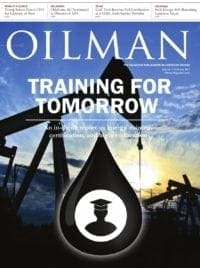Oklahoma City-based Panhandle Oil and Gas Inc. in December 2016 reported a 4Q16 profit — a small gain in what President and CEO Michael Coffman called a “difficult year” for the company.
Coffman said that product prices were “extremely low,” with an average per Mcfe sales price of $2.73 in 2016 compared to $3.97 in 2015 and $5.88 in 2014.
Panhandle reported a 4Q16 income of about $737,000, and fiscal year 2016 net loss of $10.3 million, or $0.61 per share, compared to a net income of $9.3 million, or $0.56 per share, for 2015.
In a company statement, Panhandle Senior Vice President and Chief Operating Officer Paul Blanchard said that the company decided not to participate in most of the wells that were proposed to Panhandle last year, and instead focused on leasing mineral acreage in what Blanchard described as higher risk areas compared to core resource plays.
“As product prices climbed later in fiscal 2016 and into [1Q17], we have seen meaningful activity return to our core resource play holdings,” he said.
Blanchard noted that drilling has started on an eight-well horizontal drilling program in which Panhandle has an average of 20% working interest and 27.4% net revenue interest. The program, which is operated by BP America in the Southeastern Oklahoma Woodford Shale gas play, should begin producing in 2Q17.
He also said that Panhandle will participate with working interest and net revenue in its leasehold in six Woodford Shale wells that Cimarex Energy is drilling. The projects will begin producing in 3Q17.
In addition, Blanchard said that pad drilling is scheduled to resume on Panhandle’s Eagle Ford leasehold in 2Q17.
“The operator plans to move in one rig and drill a 10-well program,” he said. “The drilling…will be on some of the lowest risk acreage in the company’s portfolio, as it is in the cores of well-developed and understood resource plays. These investments should materially increase Panhandle’s daily oil, NGL and natural gas production when the wells come online.”




